Miguel Milà
1931 - presentVisitors to Barcelona (and in fact may other places worldwide) are probably unaware that when they stop for a rest on a public bench they are most likely sitting on a design by Miguel Milà (or perhaps by his son Gonzalo, yet another talented designer in the family).
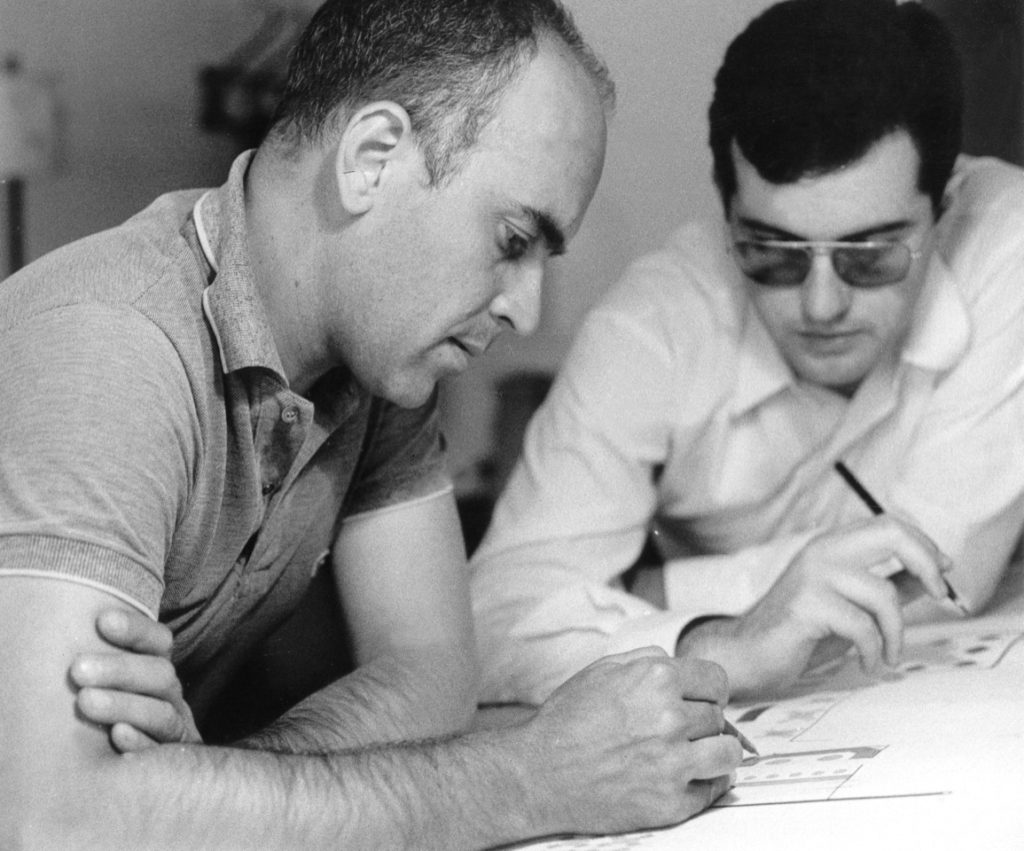
Industrial and interior designer, inventor, handyman, and ‘pre-industrial’ designer are some of the ways in which this veteran designer describes himself.
Although his last name is synonymous with architecture and design in his native Barcelona, on a personal level Miguel Milà has always shunned the spotlight, and only in the last decade or so have public honors and more widely recognized acclaim (though mostly still only within Spain), begun to acquire around the work of this immensely talented designer. Indeed, when one of your brothers (Leopoldo) has designed one of the most iconic motorbikes of all time the Impala by Montesa and another (Alfonso) is one of the architects of Olympic Ring stadium, and your last name is linked to a world heritage site, it is perhaps all the more remarkable that this quiet master of design is still at 87 years old, working and designing with the same passion that he started out with.
These remarkable brothers were just three of the nine children of the Count of Montseny, himself a remarkable man who raised his children with the motto ‘Believe your father has no fortune!’ From their work ethic it appears that they took him at face value. All three had remarkable careers that intertwined the worlds of architecture product, interior and industrial design, notably through the company Polinax founded by Leopoldo which fabricated many of Miguel’s designs, in fact all three brothers at one point made designs for the company. His brother Alfonso and Federico Correa (designers of the Barcelona Olympic ring among many other projects ). These lifelong friends and architectural partners also worked with and for Jose Antonio Coderch one of the founders of modern Spanish architecture. In the sixties, they built several houses in the population of Cadaqués with a very unique style, characterized, among other things, by furniture built into architecture. It was for these houses that all three brothers designed chimneys that were produced by Polinax.
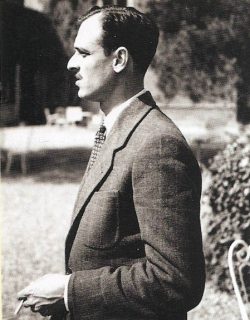

All architect and design lovers are familiar with the works of Gaudi that flamboyant genius whose works almost defy definition. One of his most famous buildings is Casa Milà, popularly known as ‘La Pedrera’ (the stone quarry), an ironic allusion to the resemblance of its façade to an open quarry. It was commissioned by the industrialist Pere Milà i Camps and his wife, Rosario Segimon i Artells, in an era when the citizens of Barcelona were using their wealth to contribute to a city of truly stunning architecture. Miguel Milà, is a direct descendant of Pere Milà, as a child and in early adulthood he viewed Gaudi’s work as extravagant nonsense but today fully values it’s eccentric genius, his own minimal and thoroughly practical aesthetic is the antithesis but is still deeply associated with the cultural history of Barcelona.
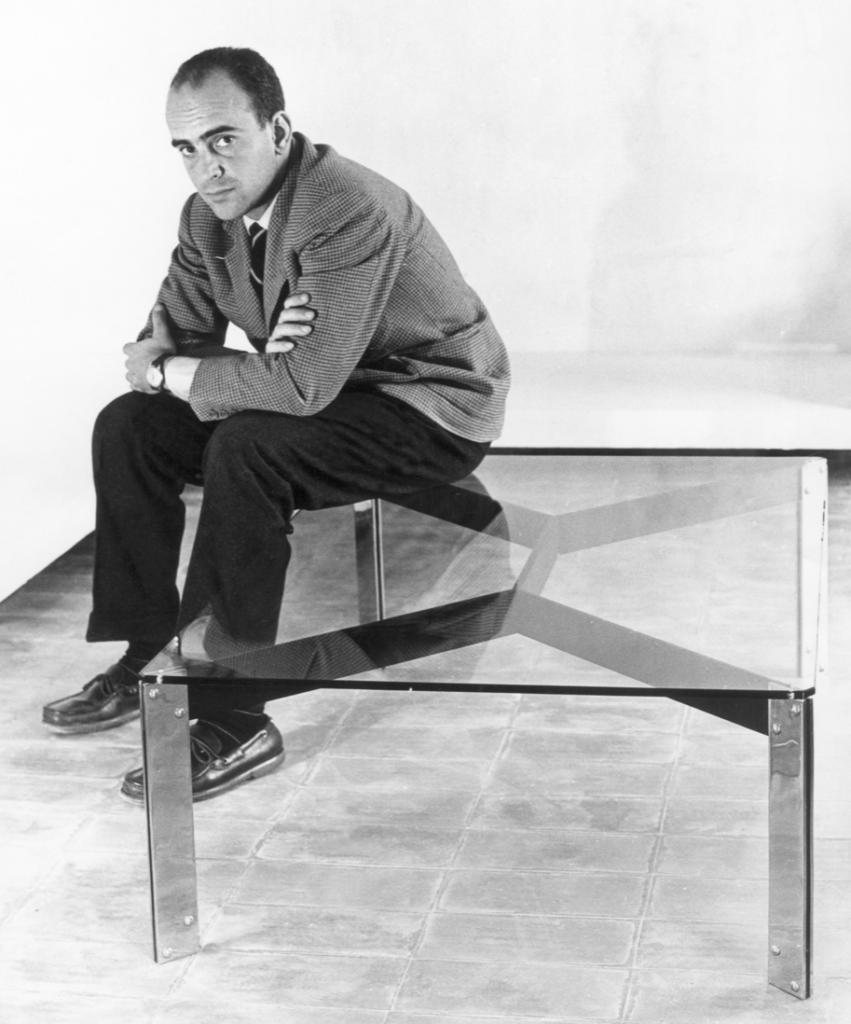
Industrial and Interior designer, inventor, handyman, and ‘pre-industrial’ designer are some of the ways in which this veteran designer describes himself, now 87 years old and still producing new work, he began his career at a time when Spain had few industrial or economic resources and so he sought out the skills of the local blacksmiths and carpenters, and the craftsmen who could work with rattan. He started out studying architecture in 1948 though he dropped out to work as an interior designer in the architectural offices of his brother Alfonso and Federico Correa, with their encouragement, instead of just searching for furniture for their projects he began to design his own. To this day, he likes to work with his own hands, making his own prototypes in his garage workshop. Although his family background may have been aristocratic, his father taught him and his 8 siblings from a young age to “be useful and be of use” a philosophy that is apparent in all of his work.
To this day, he likes to work with his own hands, making his own prototypes in his garage workshops.
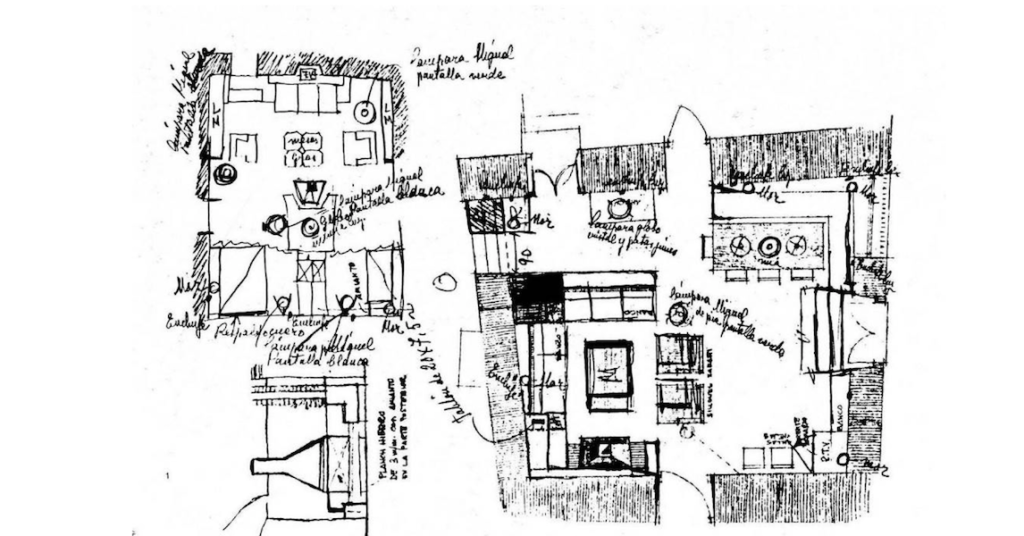
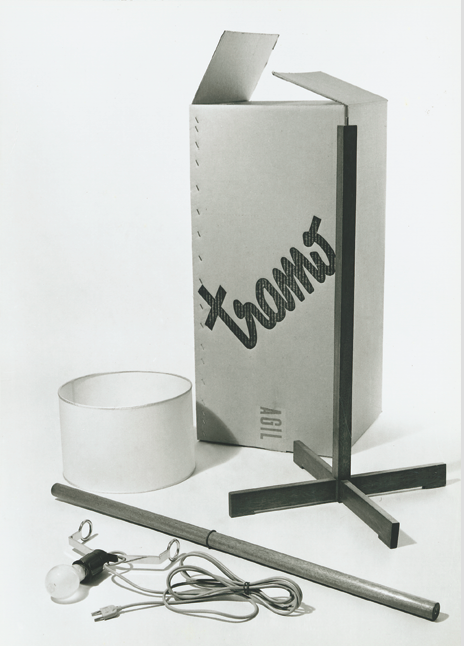
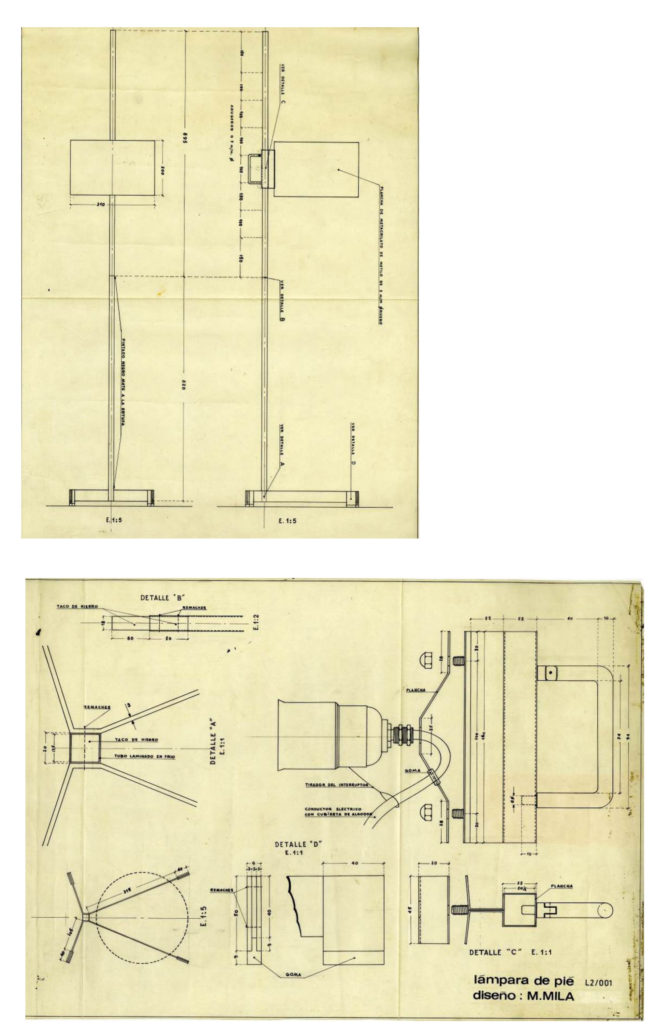
TRAMO: the company name was derived from, “Trabajos Molestos” – annoying jobs in English, was founded by Milà in the early sixties to produce his own designs, though its roots were in his childhood when he advertised his services to his older brothers offering to do the jobs they didn’t like around the house. The TMM lamp he designed in 1961 is a classic design, re-released in 1986 by Santa & Cole it is still a best seller 55 years on. The lamp began as the TN designed for his Tia (Aunt) Nuria then was developed as the TMC also re-issued 50 years after its original release. The TMM was developed as a more affordable alternative although at times it has actually been sold at a higher price. A personal favorite of the designer, he says “I believe of all my designs, the TMM is the one that best defines my conception of design. It is a very simple lamp, and this is proven by the fact that one can dismantle it in an instant. Its advantage is that removing the lampshade is very easy, even when the lamp is switched on. Then you have the leg, the electric components and the conventional shade, which in fact can be changed, when it breaks as it gets old or whatever, and there you have a new lamp.” For Mila, a good lamp should illuminate but not dazzle and his TMC and TMM lamps are almost a metaphor for his design process, one that constantly seeks to improve through simplifying and adjusting.
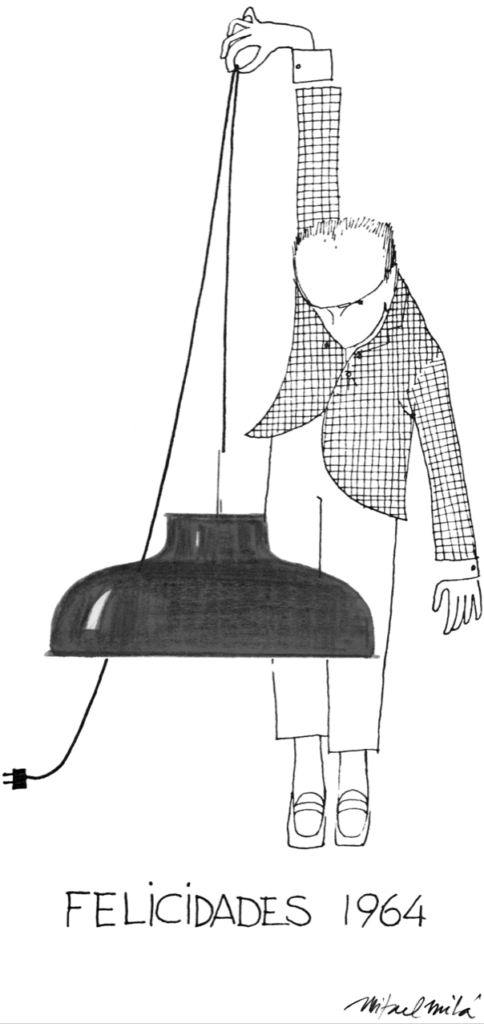
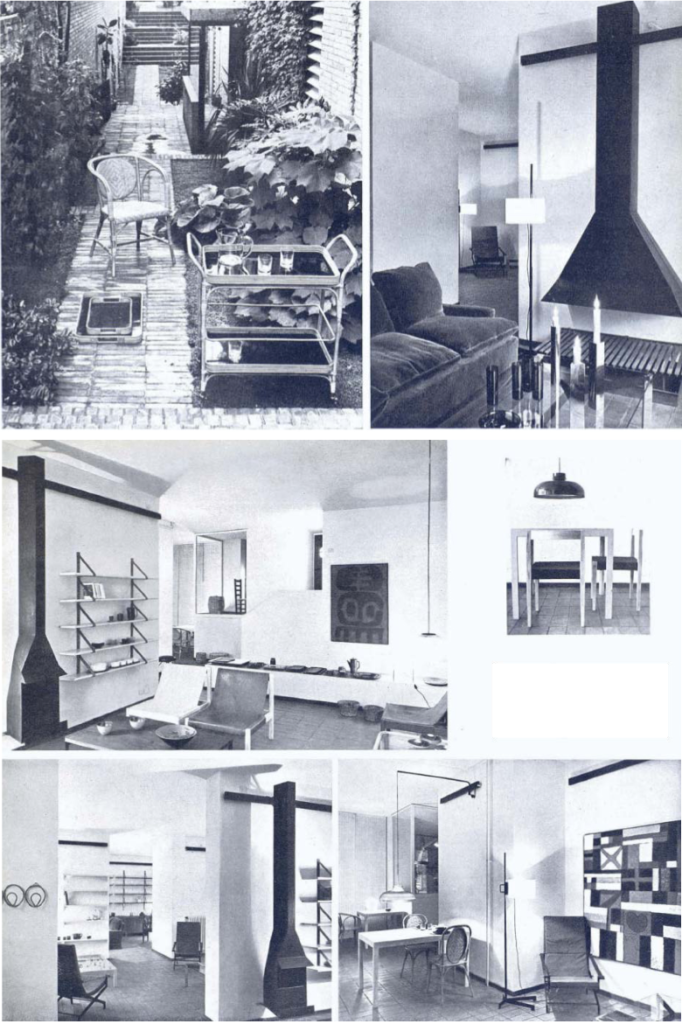
Gres
Gres was a pioneering furniture store, that existed from 1962-1989 , set up by 3 women Roser Ventós, Montse Tayà and Montse Trot, Miguel Milà became a minor partner. Gres was a precursor to Ikea with their concept of producing simple, affordable furniture that nonetheless had been designed to be attractive, something that just didn’t exist in the market at that time. Folding wooden chairs, simple bookshelves, practical and essential items that let people furniture their homes economically but with designs that would last, Milà’s long standing design principle.
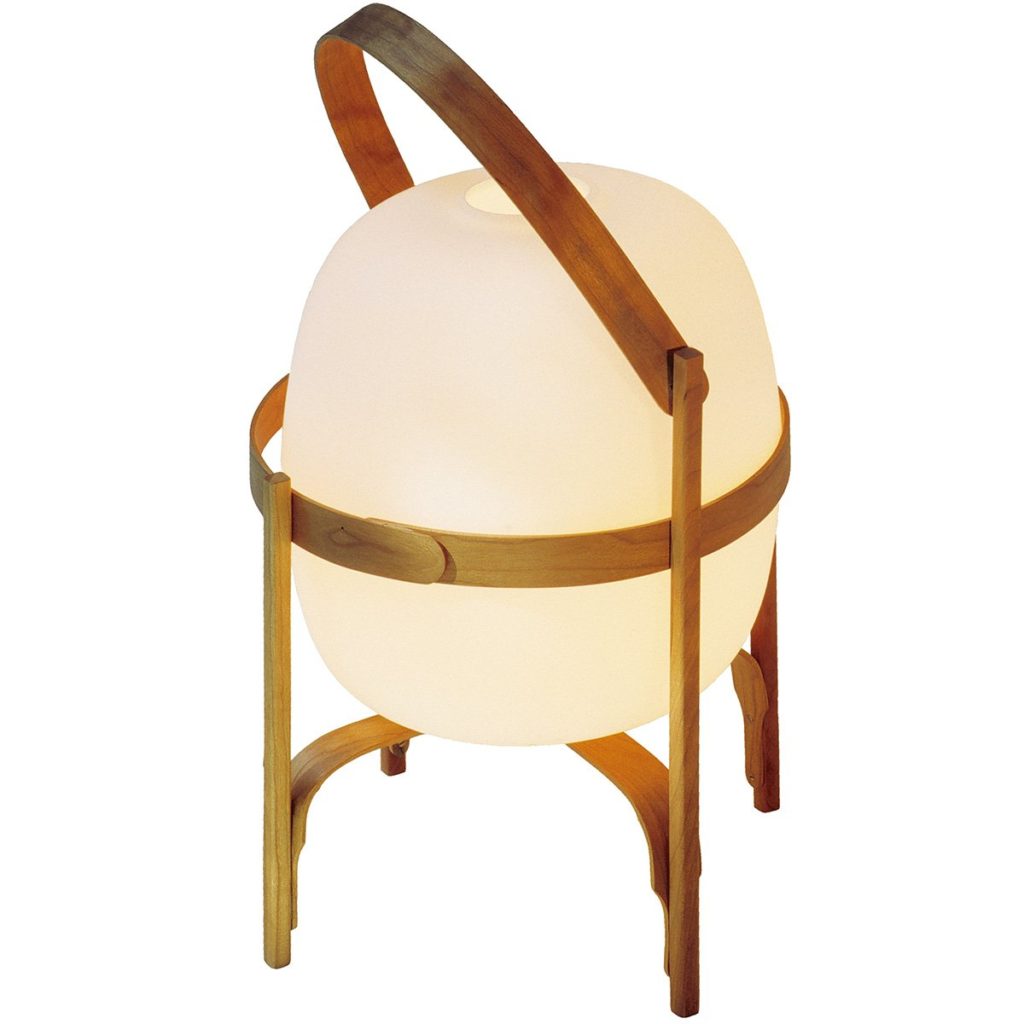
As with all of Milá’s objects, Cesta, designed in 1962, strikes a balance between rational functionalism and the legacy of local artisanal skills, combining a beautiful opal glass shade and a cherry frame formed with traditional steaming techniques. Reminiscent of Japanese lanterns, Cesta has a handle to make it portable, a simple but practical element that reinforces Milàs typical focus on supreme functionality balanced with simple elegance. It is perhaps the most iconic of his lamp designs and has spawned many imitations.
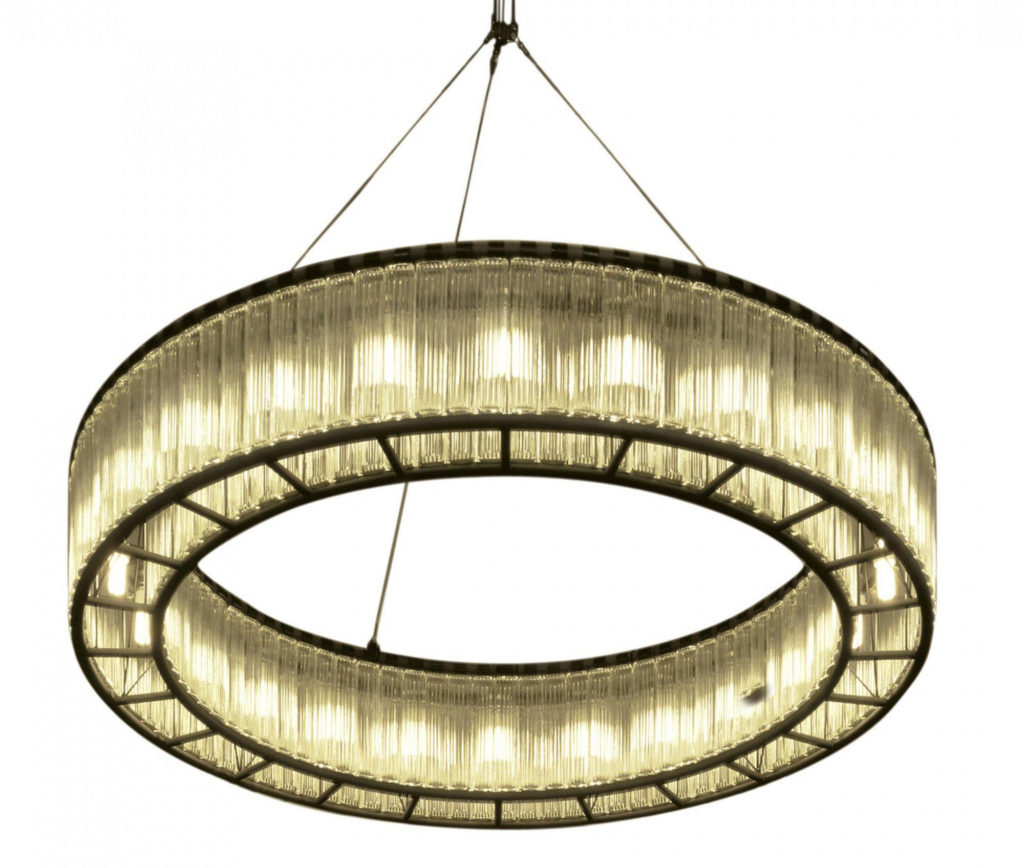
Another of the designs that closely links the work of Miguel with his architect brother Alfonso, is the Estadio light which he designed for the Barcelona Olympic Stadium in1992, for which his brother was one of the architects, the design was inspired by the iron work candle holders used as chandeliers in cathedrals. Like almost all of his works it continues to be a popular interior design choice particularly in the hospitality industry, many years after it first was designed.
Visitors to Barcelona (and in fact may other places worldwide) are probably unaware that when they stop for a rest on a public bench they are most likely sitting on a design by Miguel Mila (or perhaps by his son Gonzalo, yet another talented designer in the family).The NeoRomántico bench designed in 2002 was the first piece of street furniture in Spain to be awarded the Cradle to Cradle® silver certificate for the environment, made from 63% recycled material and 99% recyclable it’s designed to be assembled and dismantled easily, therefore to facilitate recycling. Furthermore, 27% of the energy used in manufacturing comes from renewable sources. Mila has long been a champion of recycling and renewables and has used solar energy to heat the water his own home for the last 40 years. Benches are important to him as a means of communication, forcing public interaction between strangers. In keeping with his low-key approach, it’s fitting to you can sit outside the Design Museum on one of benches and be unaware that inside you can find his work in the permanent display and in is archives in the library.
Mila has long been a champion of recycling and renewables and has used solar energy to heat the water in his own home for the last 40 years.
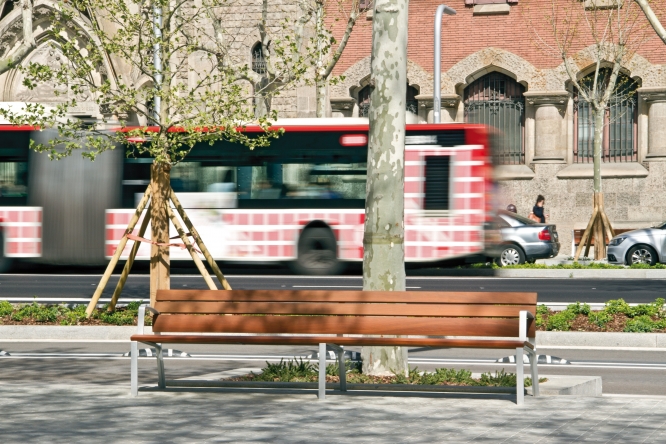
One of the most recent designs, made in collaboration with his industrial designer son Gonzalo, Expormim the ‘gata’ chair’s name pays homage to the artisan craftsmen of Gata de Gorgos, a small village in the province of Alicante where Miguel learnt how to work rattan 50 years ago, continuing his lifelong pursuit of distilling craft and design in the most practical and efficient ways possible to make simple classic designs.
It’s a fitting tribute to the close family ties he has maintained all his life from the legacy of his ancestors, to beginning his career with his brothers and now continuing with the work of his son, who like his father before him abandoned his architecture studies for design. This is a remarkable family of talent, quietly dedicated to making useful, simple designs that repeatedly become classics over time. He has won many awards in his native Spain and within Catalunya at least is a recognized elder statesman of the design world but is still little known in the English-speaking world. Many architects and interior designers would recognize the work but know nothing of the self-effacing Master of Design behind it. It’s a story of hard work and talent , a quiet methodical approach to making useful things that deserves wider recognition. Miguel Milà the scion of a famously over achieving family, most at home in the hardware store and working with his hands, still hard at work in his 9th decade, abiding by his philosophy that “When things are useful and well made, they are beautiful, and that never ends. When you do not believe in what you do, you do not do things right.” A lesson perhaps for all of us.
"When things are useful and well made, they are beautiful, and that never ends. When you do not believe in what you do, you do not do things right.”
Milà and Architecture
It is impossible to examine the work of Miguel Milà without a look at the architectural work of Alfonso Milà and Federico Correa and in turn their mentor and first boss José Antonio Cordech. The decade from 1950 to 1960, in which Miguel Milà began his professional career, was the most fruitful in the history of design in Spain and also a significant one for Spanish architecture .Several proponents of rationalist architecture had created the R Group, which included Cordech though he later left it in disagreement. They considered themselves “postfunctionalists”and had a strong affinity with their counterparts in Milan. Gio Ponti was close to Cordech and in 1961 published his article “it is not geniuses we need now” in Domus magazine in an issue which also published works by Correa and Milà. Miguel himself quotes all three as influences, their precision he says made it easy to design furniture that would fit in their spaces and it was with their encouragement that he left architecture for design.
Correa and Alfonso had studied architecture together before going on to work at Coderch’s studio. In 1953 they set up their own practice, and persuaded Miguel to work with them beginning as an interior designer before that role evolved into product and industrial design. Their joint output includes projects such as residential properties in Cadaqués in the 1950s and 1960s; the Montesa Factory (1957); the Godó i Trias Factory (1962); the Monitor building (1966); the Atalaya building (1966); the renovation project of Plaça Reial in Barcelona (1985); the Olympic Ring of Montjuïc (1984); and Casa Serra (the new headquarters of Barcelona Provincial Council 1985–1987). Highlights of their interior design work include the Olivetti stores (1968–1969), the Flash-Flash restaurant (1970) and the Furest boutiques in Barcelona (1974–1977), and later the renovatiom of the the Episcopal Museum of Vic. Miguel’s work can be seen in almost all of their projects. Cordech also commissioned the young Miguel to design lamps and furniture for several of his projects and was influential in guiding him toward his long adjunct career as a professor of design. Cordech notable works include “Casa Ugalde”, the social housing complex of Barceloneta that appeared in Domus, the HQ of “Banco Urquijo” or the “Instituto Frances”. He was a Member of the CIAM, jury member in the United Nations, elected member of the Royal Academy of fine arts in Barcelona, received amongst other prizes the gold medal in the IX “Trientale de Milan” (1951) , National prize for Industrial design in Argentina (1959) and many prizes FAD for architecture.
Architecture may not have been the life path for Miguel but it is the discipline that both formed and influence him the most in his evolution as a designer both by practice and close family ties and it was a shared aesthetic and sensibility that bound his career in the early days to the architects he worked for and with.
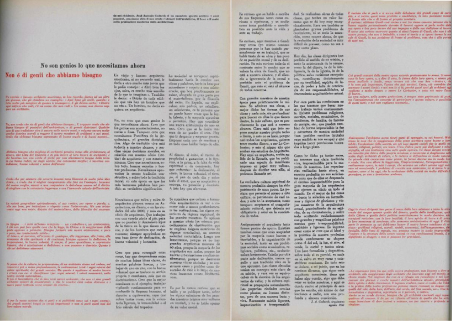
Author
Jane Darroch Riley currently lives and works in Barcelona where she specializes in custom book publishing, artists catalogues and copywriting for luxury brands. She has worked for the BBC in London and Harper Collins in New York and Hong Kong, and has won several New York Book awards for her production skills.